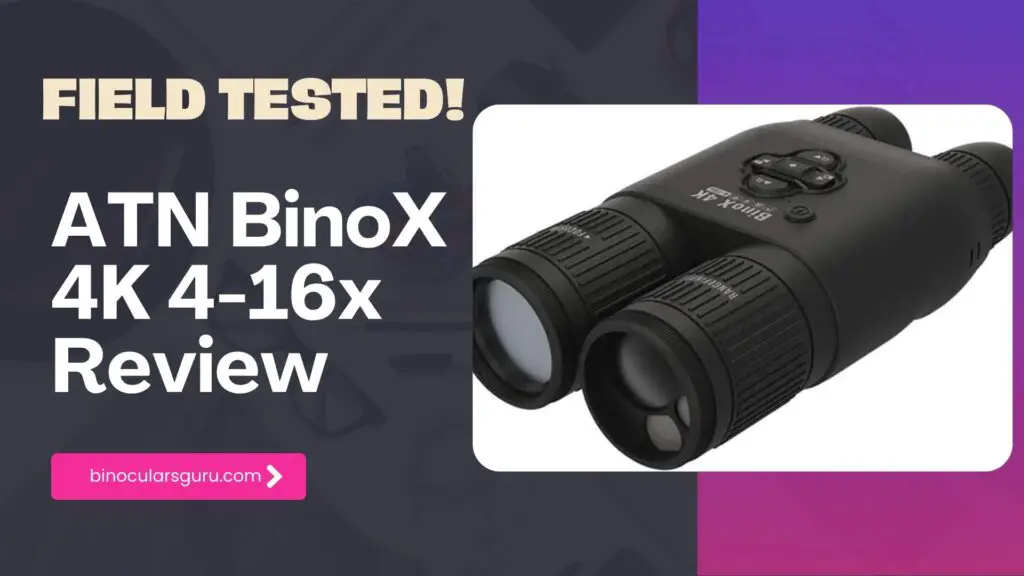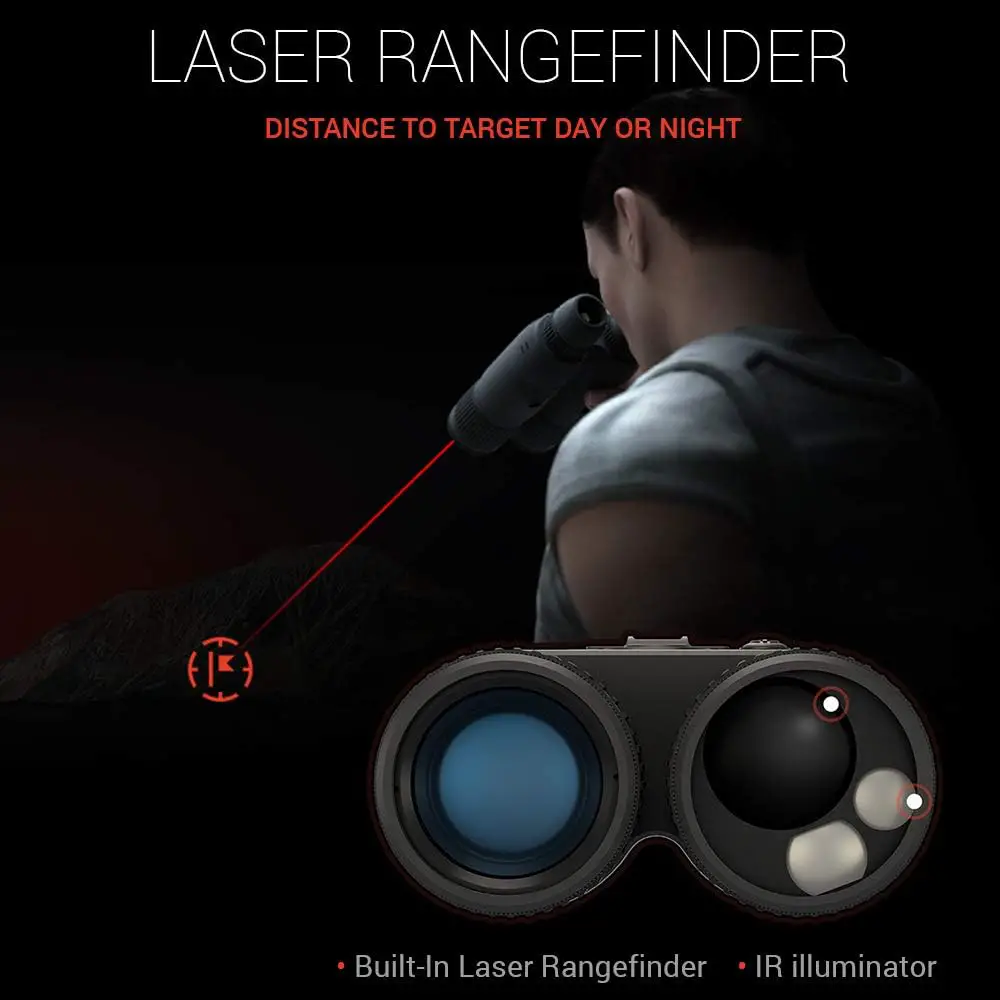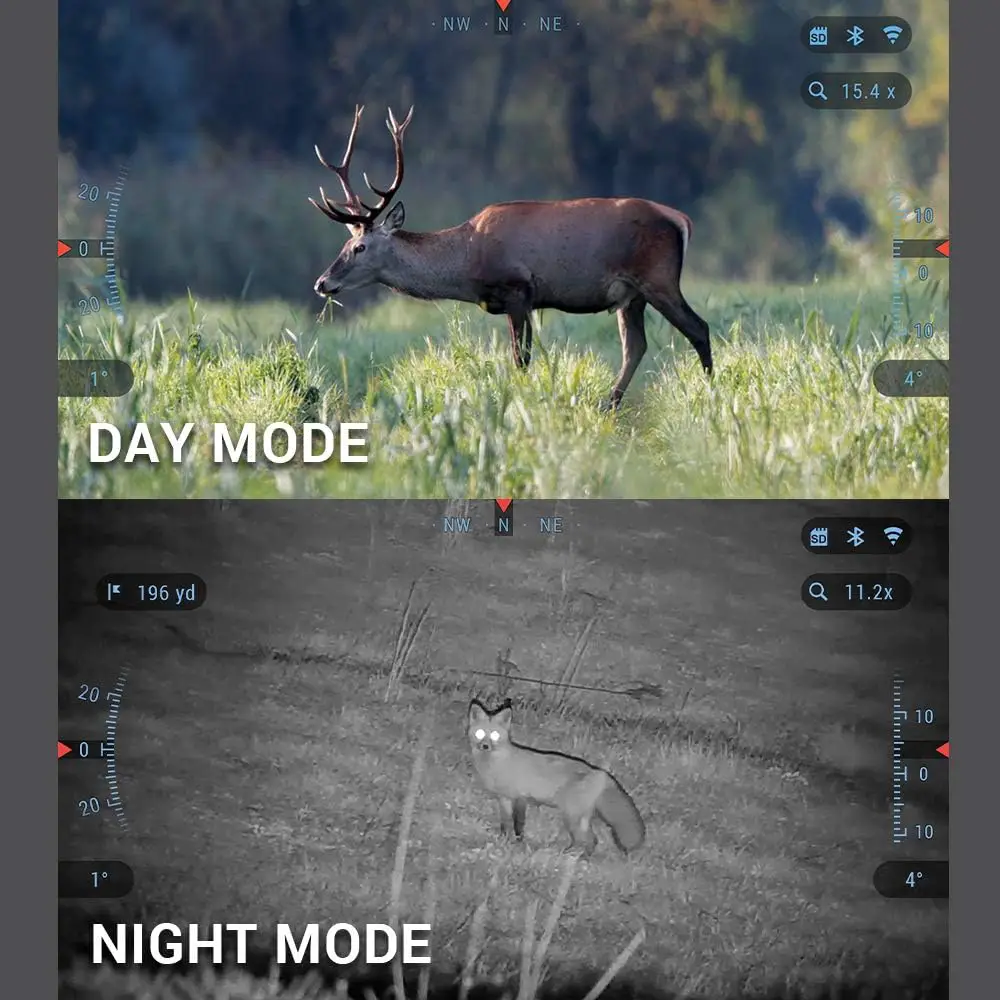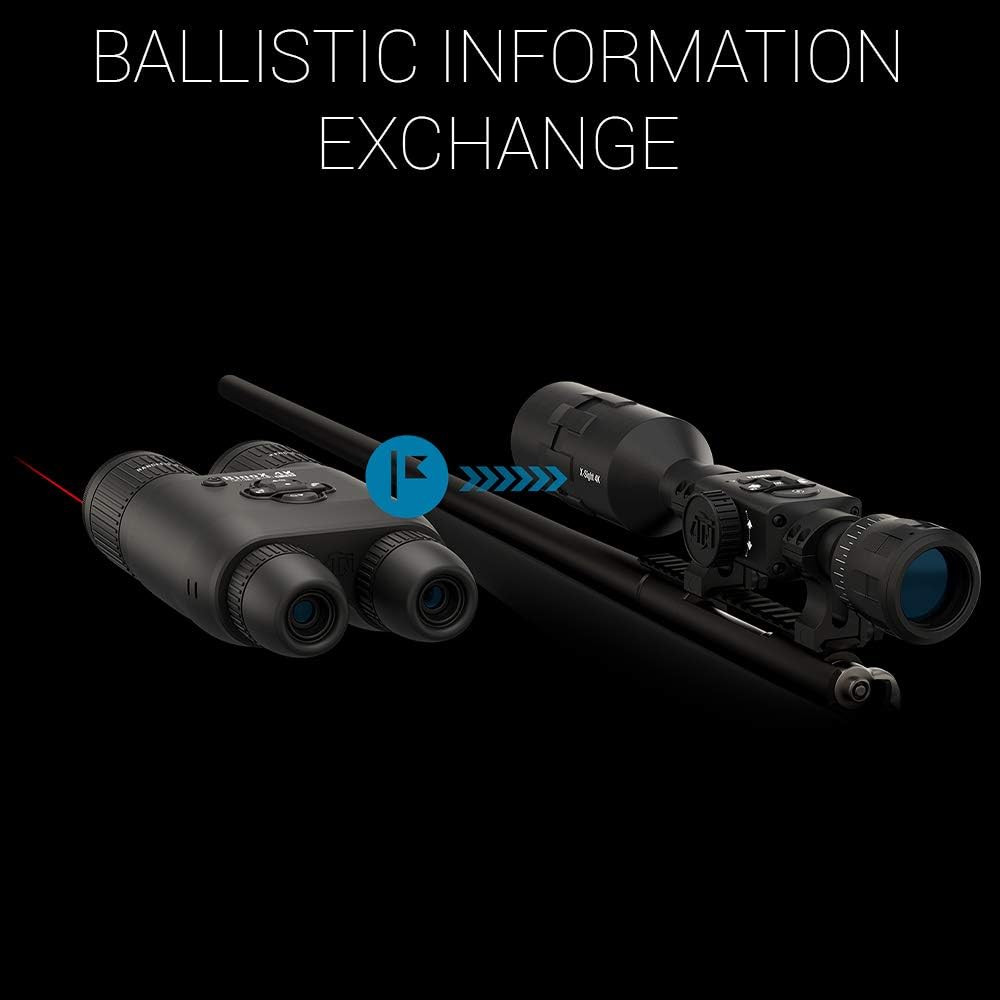ATN BinoX 4K 4-16x Review: A Smart Choice for Day and Night Adventures?

If you’re into hunting, wildlife observation, or just love gadgets that make your adventures more exciting, you’ve probably stumbled across the ATN BinoX 4K 4-16x Smart Day/Night Digital Binoculars.
These aren’t your grandpa’s binoculars—they’re packed with futuristic features like night vision, a laser rangefinder, 1080p video recording, and even Wi-Fi for streaming to your phone.
But do they live up to the hype?
After testing these binoculars myself for 100+ hours, digging deep into user experiences, expert reviews, and hands-on insights from various sources, I’m here to break it all down for you. Let’s explore the optical quality, build, features, ease of use, battery life, and whether these binoculars are worth your hard-earned cash.

A New Breed of Binoculars
When I first heard about digital binoculars with night vision and a built-in rangefinder, I thought it sounded like something straight out of a sci-fi movie.
The ATN BinoX 4K 4-16x promises to bring that high-tech fantasy to life, marketed as a must-have for hunters, birdwatchers, and anyone who needs to see clearly in both day and night conditions.
With a price tag around $600-$700, they sit in a unique spot—more expensive than basic binoculars but cheaper than professional-grade night vision gear.
My goal was to find out if these binoculars deliver on their promises or if they’re more flash than substance. Let’s look into the details more closely.
Specifications: What’s Under the Hood?
Here’s a quick rundown of the key specs for the ATN BinoX 4K 4-16x.
| Specification | Details |
|---|---|
| Magnification | 4-16x (digital zoom) |
| Objective Lens Diameter | 40mm |
| Weight | 2.5 pounds (1.13 kg) |
| Field of View | 4.6 degrees |
| Exit Pupil | 2.5mm |
| Prism Type | Roof Prism |
| Water Resistance | Waterproof |
| Battery Life | Up to 18+ hours (claimed) |
| Features | Night vision with IR illuminator, laser rangefinder (up to 1000 yards), 1080p video recording, photo capture, Wi-Fi streaming, e-compass, GPS, app control |
| Material | Plastic enclosure |
| Connectivity | Compatible with iOS & Android devices via Wi-Fi and Bluetooth |
These specs highlight the binoculars’ versatility, combining traditional optics with digital enhancements. But specs only tell part of the story—let’s see how they perform in real-world use.

Optical Quality: Daytime Clarity vs. Nighttime Magic
The heart of any binocular is its ability to deliver clear, sharp images, and the ATN BinoX 4K has a unique challenge as a digital optic. Here’s how it stacks up:
Daytime Performance:
The 4K Ultra HD sensor and dual-core processor promise crystal-clear images, and I can say they have decent clarity during daylight hours, especially at lower magnifications (4x-8x).
However, after deep analysis, I found that the daytime images are underwhelming compared to traditional high-end binoculars like the Vortex Diamondback HD, owing to a lack of sharpness and a narrow 4.6-degree field of view (roughly 240 feet at 1000 yards).
This narrow FOV can make it harder to track fast-moving subjects, like birds, or scan wide landscapes. The digital zoom up to 16x is convenient for long-range viewing, but as with all digital zooms, image quality degrades at higher magnifications, sometimes appearing pixelated.
For daytime use, these binoculars seem functional but may not impress optical purists.
Nighttime Performance:
Night vision is where the BinoX 4K aims to shine, and it largely delivers.
The built-in IR illuminator allows visibility in total darkness, which is a game-changer for hunters spotting game or navigating at night. I must praise its effectiveness which is up to 250-300 yards.
I have also taken the feedback of my fellow avid hunters, with some calling the night vision “outstanding” for identifying animals in low-light conditions.
However, there’s a catch: I was able to detect some grainy or fuzzy images, especially at longer ranges or higher zooms.
Compared to dedicated night vision devices (which can cost thousands), the BinoX 4K holds its own, but it’s not flawless.
The IR illuminator requires at least one CR123 battery, and heavy use can impact battery life.
Verdict: The night vision is a standout feature, making these binoculars ideal for low-light scenarios, but daytime performance lags behind traditional optics due to the narrow FOV and digital limitations.
Build Quality: Tough Enough for the Outdoors?
At 2.5 pounds, the ATN BinoX 4K is relatively lightweight for a digital binocular, making it easy to carry on long outings.
The plastic enclosure is waterproof, which is essential for outdoor use in rain or humid conditions, and I have felt no issues with weather resistance. The design includes a soft carrying case, neck strap, and lens cover, adding practicality for field use.
However, the plastic construction raises some concerns.
While some fellow users describe the build as “solid” and “durable” for regular use, others have reported issues like broken parts or malfunctions, particularly in extreme heat or after rough handling.
While digging into our community, I observed that one user mentioned a circuit failure after just three weeks, suggesting potential reliability issues in harsh environments.
Compared to rugged, rubber-armored binoculars, the BinoX 4K might not inspire the same confidence for heavy-duty use.
Verdict: The waterproof build is a plus, but the plastic material and mixed durability reports suggest it’s best handled with care in rugged conditions.

Features: A Tech-Savvy Outdoor Companion
The ATN BinoX 4K is packed with features that set it apart from traditional binoculars, making it a favorite among tech enthusiasts. Here’s a breakdown of the highlights:
Laser Rangefinder: The built-in rangefinder measures distances from 5 to 1000 yards with 1-yard accuracy, a huge advantage for hunters. It can even send range data via Bluetooth to compatible ATN SMART HD riflescopes, automatically adjusting the point of impact for precise shots. These features, are a “game-changer” for hunting.
Night Vision with IR Illuminator: As noted, the IR illuminator enables visibility in total darkness, effective up to 250-300 yards. It’s a standout for nighttime hunting or surveillance.
Video and Photo Capture: You can record 1080p Full HD videos or take photos directly to a micro SD card (4GB-32GB supported). This is great for documenting wildlife or sharing adventures on social media, though some users criticize the camera quality as “awful” or grainy.
Wi-Fi and App Connectivity: The binoculars support live streaming to iOS or Android devices, allowing you to share your view in real-time or control settings via the ATN app. This dual-streaming capability (recording and streaming simultaneously) is a unique selling point, though it can drain the battery faster.
E-Compass and GPS: These add navigation aids, useful for orienting yourself in the field or geotagging images.
Smooth Zoom and Image Stabilization: The digital zoom is smooth, and image stabilization helps reduce shakiness, though it’s not as effective as optical stabilization in high-end binoculars.
While these features are impressive, some can find them overwhelming, with too many menus and options to navigate. The digital interface can feel like operating a small computer rather than a simple binocular.
Verdict: The feature set is a major draw, especially for hunters and tech lovers, but it may be overkill for users seeking simplicity.
Ease of Use: A Learning Curve for Tech Newbies
Setting up the BinoX 4K is relatively straightforward: charge it using the included USB-C cable (note: no wall charger is provided, so you’ll need a 2-amp charger), insert a micro SD card for media storage, and update the firmware if needed.
Once powered on, the digital interface displays on a 1280×720 screen, with menus for adjusting zoom, night vision, recording, and more.
For tech-savvy users, this is intuitive after some practice, but others find it complex, especially if they’re used to traditional binoculars with no digital controls.
The app adds functionality, like remote control and media sharing, but it can be finicky, I have faced connectivity issues sometimes. The learning curve is steeper than with standard optics, but once mastered, the controls are manageable.
Verdict: Expect a bit of a learning curve, but it’s worth it for the added functionality if you’re comfortable with tech.
Battery Life: Plan for Heavy Use
ATN claims the BinoX 4K offers up to 18+ hours of battery life, which sounds impressive for a device with so many features.
However, real-world performance varies. I used the device for 5-6 hours without issues after an overnight charge, but I would suggest carrying a spare battery or portable charger for extended trips.
Also, heavy use of the IR illuminator, night vision, or Wi-Fi streaming can drain the battery much faster, sometimes in just a few hours..
Verdict: Battery life is decent but may not meet the 18-hour claim under heavy use. Be prepared with backup power.
Comparison to Alternatives
To put the BinoX 4K in context, I compared it to other options in the $300-$600 range:
- Vortex Diamondback HD 10×42 (~$250): These traditional binoculars offer superior daytime optical clarity and a wider field of view, but they lack night vision or digital features. Ideal for birdwatchers or daytime users.
- Bushnell Equinox Z2 6×50 (~$400): Another digital night vision binocular, the Equinox Z2 offers good night vision but lacks the rangefinder and Wi-Fi features of the BinoX 4K. Image quality may be comparable or slightly better in some scenarios.
- ATN BinoX-HD 4-16x (~$400): An earlier model from ATN, it’s slightly cheaper but has fewer advanced features and a lower resolution sensor. The 4K model is a clear upgrade.
For users needing only daytime optics, the Vortex is a better value. For night vision and digital features, the BinoX 4K stands out, though it’s not without flaws.
Value for Money: Worth the Price?
At $500-$600, the ATN BinoX 4K is a premium purchase, but its digital features justify the cost for me.
Hunters can benefit from the rangefinder and night vision, while tech enthusiasts love the video recording and streaming capabilities.
However, the mixed optical quality and build concerns mean it’s not a slam-dunk for everyone. T
raditional binoculars in this price range, like the Nikon Monarch M5 (~$500), often offer better daytime clarity but lack the smart features.
User reviews reflect this divide: OpticsPlanet shows a 98% recommendation rate, while Amazon averages 3.3 stars, highlighting issues with image quality and durability.
Verdict: Great value for tech-savvy hunters or those needing night vision; less ideal for users prioritizing optical clarity.
Who Should Buy These Binoculars?
The ATN BinoX 4K 4-16x is best suited for:
- Hunters: The rangefinder, night vision, and scope integration are perfect for low-light hunting.
- Tech Enthusiasts: Video recording, Wi-Fi streaming, and app control appeal to gadget lovers.
- Nighttime Observers: Ideal for wildlife observation or security in dark conditions.
- Not Ideal For: Birdwatchers needing a wide field of view or users seeking pristine daytime optics.
Minor Drawbacks
- Narrow Field of View: At 4.6 degrees, it’s limiting for scanning or tracking fast-moving subjects.
- Grainy Night Vision: Some users report fuzzy or pixelated images, especially at higher zooms.
- Build Durability: Plastic construction and reports of malfunctions raise concerns for rugged use.
- Battery Drain: Heavy feature use can significantly reduce battery life.
- Learning Curve: The digital interface may overwhelm users accustomed to simple binoculars.
Conclusion: A High-Tech Tool with Trade-Offs
The ATN BinoX 4K 4-16x Smart Day/Night Digital Binoculars are a bold step into the future of optics, blending traditional binocular functionality with cutting-edge digital features.
They excel in low-light conditions, with night vision and a laser rangefinder that make them a hunter’s dream.
The ability to record videos, stream via Wi-Fi, and integrate with ATN scopes adds versatility for tech-savvy users.
However, the daytime optical quality, narrow field of view, and mixed build durability mean they’re not perfect. Battery life can also be a concern for heavy users.
If you’re a hunter, nighttime observer, or gadget enthusiast who can leverage the smart features, these binoculars are a solid investment at $500-$600.
But if you prioritize crystal-clear daytime optics or need a rugged, no-fuss binocular, you might want to explore traditional options like the Vortex Diamondback HD.
The BinoX 4K is a fascinating tool, but it’s best for those willing to embrace its tech-heavy approach and manage its limitations.
Let me know if you have any questions about these binoculars or other gear.
Also See:
